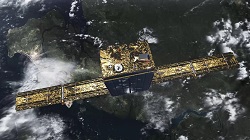Integrated sensor system monitors aircraft wiring
The EU takes pride in boasting a very high safety record when it comes to aircraft, continuously furthering research to improve aviation. Over the decades, many aircraft accidents were attributed to faulty wiring, pushing researchers to upgrade wiring systems and ensure their safety. This was the aim of the EU-funded project SENSWIRING (Harness integrated delocalized sensors network for wiring health monitoring). Working on a new wiring health monitoring (WHM) system, the project envisioned integrated, delocalised, smart sensor networks that can readily detect wire defects, supported by wireless communication and low-power embedded electronics. This involves monitoring defects in wire harnesses, which can suffer from chafing, cracking or chemical erosion. In this vein, researchers conceived a sensor network where sensors work together to report the health condition of the harness to a central node, focusing on fault detection, location and severity. Local sensor nodes were designed to detect and measure harness health, communicate with other sensors, harvest energy and also manage it. To achieve this, the project team analysed the conceived energy harvesting and management function. It then built sensing technology that fits into the wire harness and offers the required measurement functions. This was followed by outlining and developing measurement techniques and parameters, along with interpretation of the measurements. The developed WHM concept was tested in a laboratory, demonstrating its effectiveness in detecting chafing. Although further development is still required for the concept to achieve full integration into the harness, the SENSWIRING team made significant progress towards achieving this aim. Once perfected, the end product could be very effective in locating issues that will help avoid catastrophic faults. It will improve safety, decrease maintenance costs and reduce downtime, contributing to the aviation field’s environmental objectives as well. Lastly, once commercialised, the technology can potentially be transferred to other fields, including the maritime, railway and automotive sectors.







